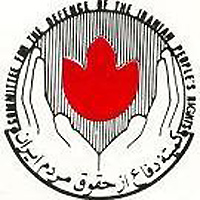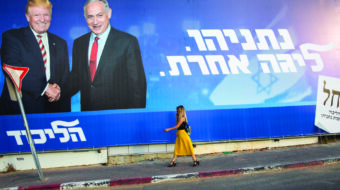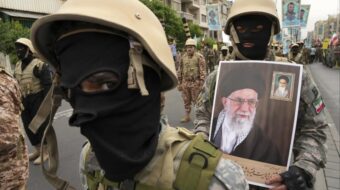
With less than two years to go before the next presidential election in Iran a power struggle to determine its outcome is in full swing.
Uncertainty and instability are not usually associated with autocratic regimes such as the Islamic Republic of Iran. The 2009 presidential election, which saw Mahmoud Ahmadinejad reinstated for a second term, changed all of that as thousands of Iranians poured onto the streets in protest at an election result that was widely seen as being rigged.
For the clergy and the revolutionary guards, the real power in Iran, Ahmadinejad was seen as a safe pair of hands. Having tolerated eight years of the reform-minded president Khatami from 1997 to 2005, the hard line taken by Ahmadinejad in his first term was enough to satisfy the clerics that a further four years was necessary, whichever way the Iranian people actually chose to vote.
Opposition candidates Mir Hossein Mousavi and Mehdi Karroubi subsequently suffered threats and harassment. They are now effectively under indefinite house arrest. Their supporters in the Green Movement, along with others in the political opposition and trade union movement, have been subject to regular violence, imprisonment and, in some cases, execution.
Yet two years into Ahmadinejad’s second term all is not well. In April the president disappeared from office for a full 11 days after his decision to fire intelligence minister Heydar Moslehi was overturned by Ayotollah Khamenei. Having fired the foreign minister, Manouchehr Mottaki, in December last year, in spite of Mottaki being a favorite of Khamenei, Ahmadinejad thought that he had a free hand in reshaping his government.
Of course there can be no such freedom under the Iranian system where the Supreme Leader has the final veto. The extent of presidential power is still reliant on the support of the religious zealots at the heart of Iran’s power structures. Undeterred, Ahmadinejad recently attempted to streamline his Cabinet with the merger of eight ministries into four. The move was formally blocked by Khamenei, assisted by the parliamentary speaker, Ali Larijani. Nevertheless, Ahmadinejad has fired three ministers and taken temporary control of the oil ministry.
Needless to say this move has been unpopular in the Iranian parliament and has put Ahmadinejad on a collision course with both the parliament and the religious establishment. The dispute has reached the point where Ayotollah Khamenei has appointed a mediator, Ayatollah Mahmoud Shahroudi, to resolve the dispute between the president and parliament. Shahroudi will chair a five-member panel made up of hardliners known for their opposition to any reforms within the ruling system.
As Ahmadinejad is unable to run again, it is widely believed that his preferred successor is his current chief of staff Esfandiar Rahim Mashaei. However, Mashaei is deeply unpopular with the religious establishment because of his views on the importance of promoting pre-Islamic Persian history as part of the culture of Iran, suggesting that the country should be an “Iranian republic” rather than an “Islamic Republic.”
Such talk is seen as the precursor to reducing the role of the clergy in the constitution to a largely symbolic one, with increased powers for the presidency. While on the surface Mashaei’s position has the veneer of modernity, he is nevertheless a deeply conservative politician. His current positioning is widely seen as an attempt to woo those disaffected by the outcome of the 2009 election, by positioning himself as a modernizing voice within the Iranian system.
His views with the voters remains to be seen, however. In recent weeks at least 25 people close to the president and Mashaei have been arrested by the security forces and are facing charges ranging from revolutionary “deviancy” to espionage.
More recently it has appeared that the current parliamentary speaker, Ali Larijani, may be positioning himself as the hard line candidate. In relation to the recent dispute between the president and parliament Larijani has backed the role of Ayotollah Khamenei in settling any differences, stating:
“We at the Majlis (Parliament) sometimes pass something but when we realize that the leader has a different view, then we change our position. I think this is one of the positive aspects of the Majlis, in that when it understands the views of the leader, it acts on it.”
This sounds very much like Larijani offering himself as the safe pair of hands the ayotollahs will be looking for in 2013.
While the struggle for position in the 2013 presidential race goes on, the Iranian people are already the losers before the official campaign begins. Flying in the face of reality, President Ahmadinejad praised Iran’s economic development in a speech on February 28, asserting, “Iran is one of the few countries in the world where no one goes to sleep hungry.”
However, according to the Economist Intelligence Unit’s (EIU) Iran report (December 2010) high inflation will be a factor in Iran’s economy for the next four years. The current inflation rate is 15 percent, which Ahmadinejad has responded to by keeping the exchange rate artificially high. The outcome of this strategy is that the price of foreign goods remains more stable than those produced in Iran, meaning that Iranian-produced goods remain on the shelves. The reality has been that the doubling of the price of bread and the quadrupling of gas prices has pushed many ordinary Iranians further into poverty and, in spite of Ahmadinejad’s pronouncements, hunger.
The instability of the next two years is not likely to help Iran’s position on the international stage. The threat of external attack, whether from the U.S. or Israel, is never far away. There has already been speculation that an Israeli attack on Iran could happen before the September meeting of the UN Security Council, which is scheduled to discuss the issue of Palestinian statehood.
While political moves are played out in Iran’s ruling circles the economy continues to be in freefall, the international position of the country is uncertain and the lives of the Iranian people are a daily struggle against unemployment and inflation. The removal of subsidies on fuel, food and other daily essentials has led to recent unrest with labor protests over delayed salary payments and rising unemployment. This is where the hope for the Iranian people lies, in their own hands. Action by the people in Egypt and Tunisia is showing what is possible. Iran’s leaders are well aware that, for all their maneuvering, the people may yet decide the election outcomes in ways that may not be to the liking of the establishment.
Photo: An Iranian lawmaker walks through the parliament, Tehran, Iran, Aug. 17. (Vahid Salemi/AP)












Comments